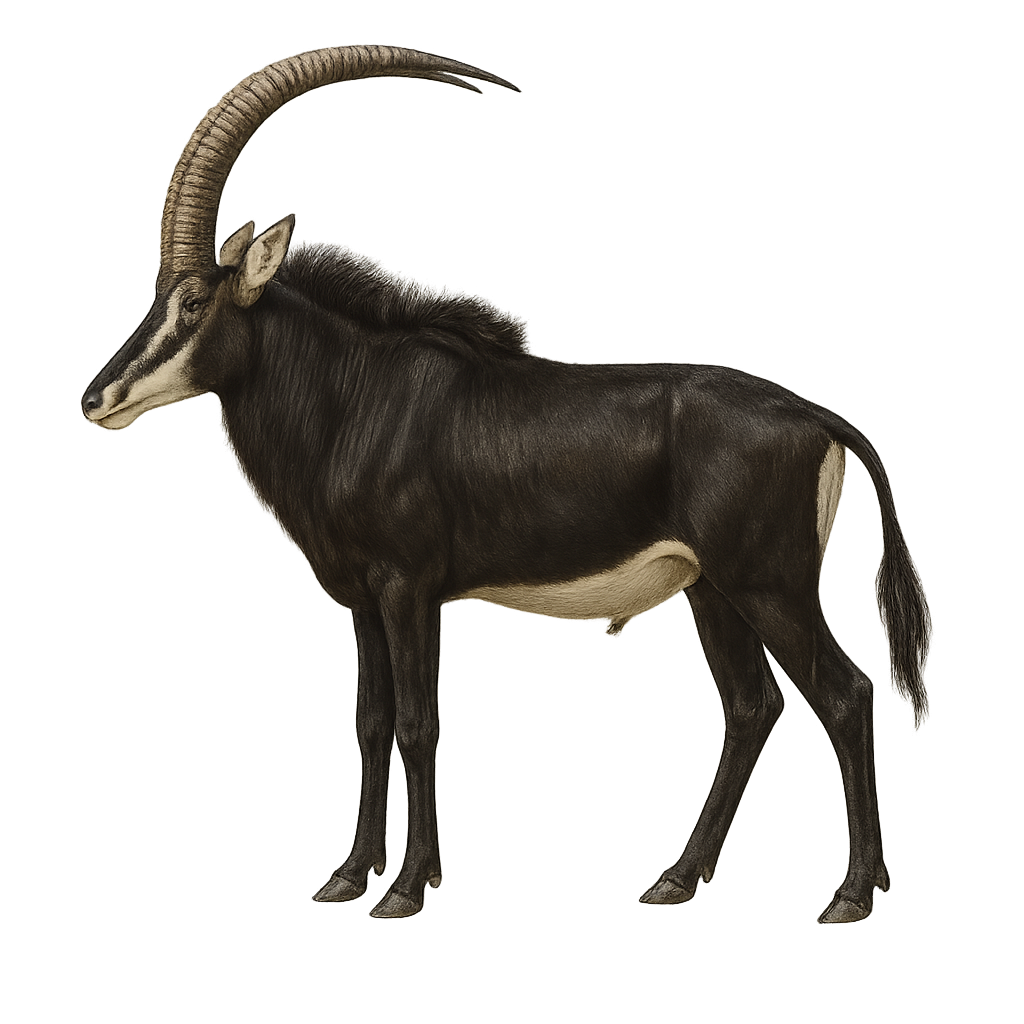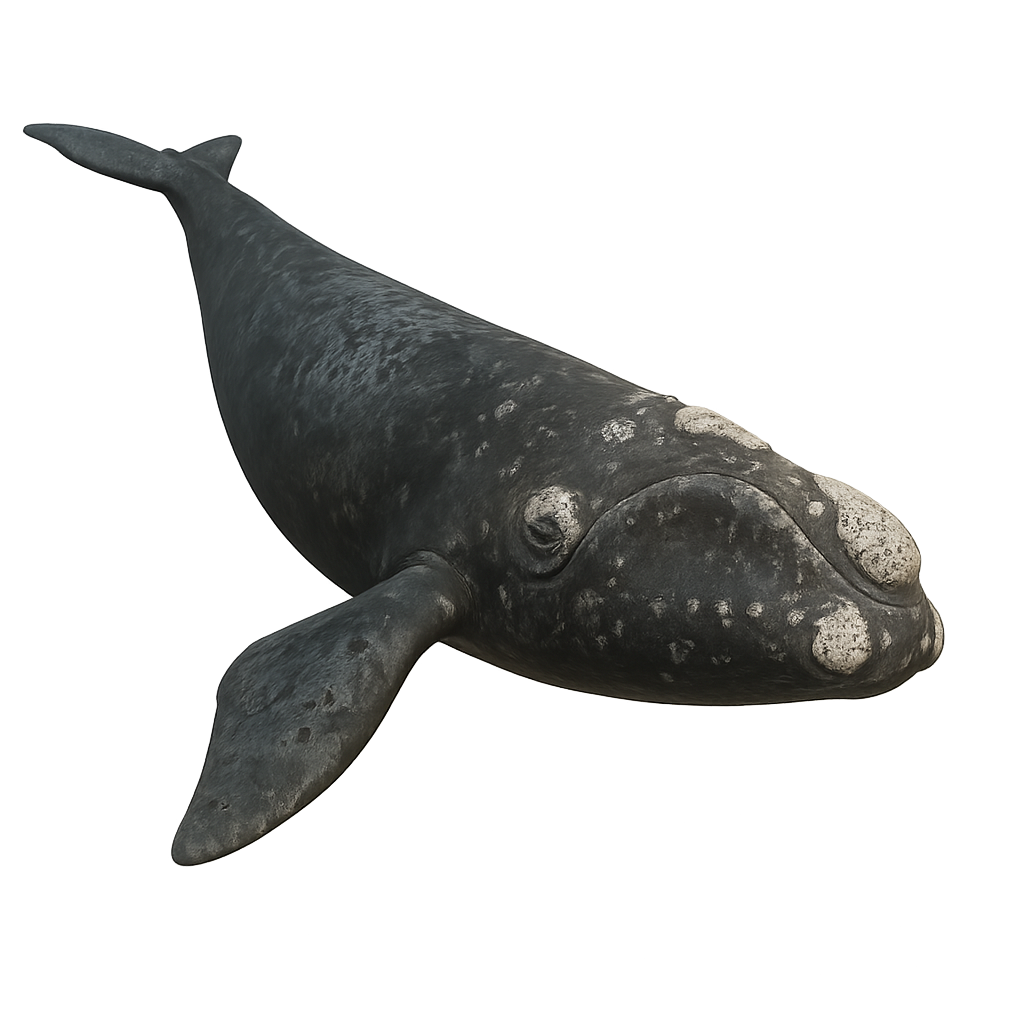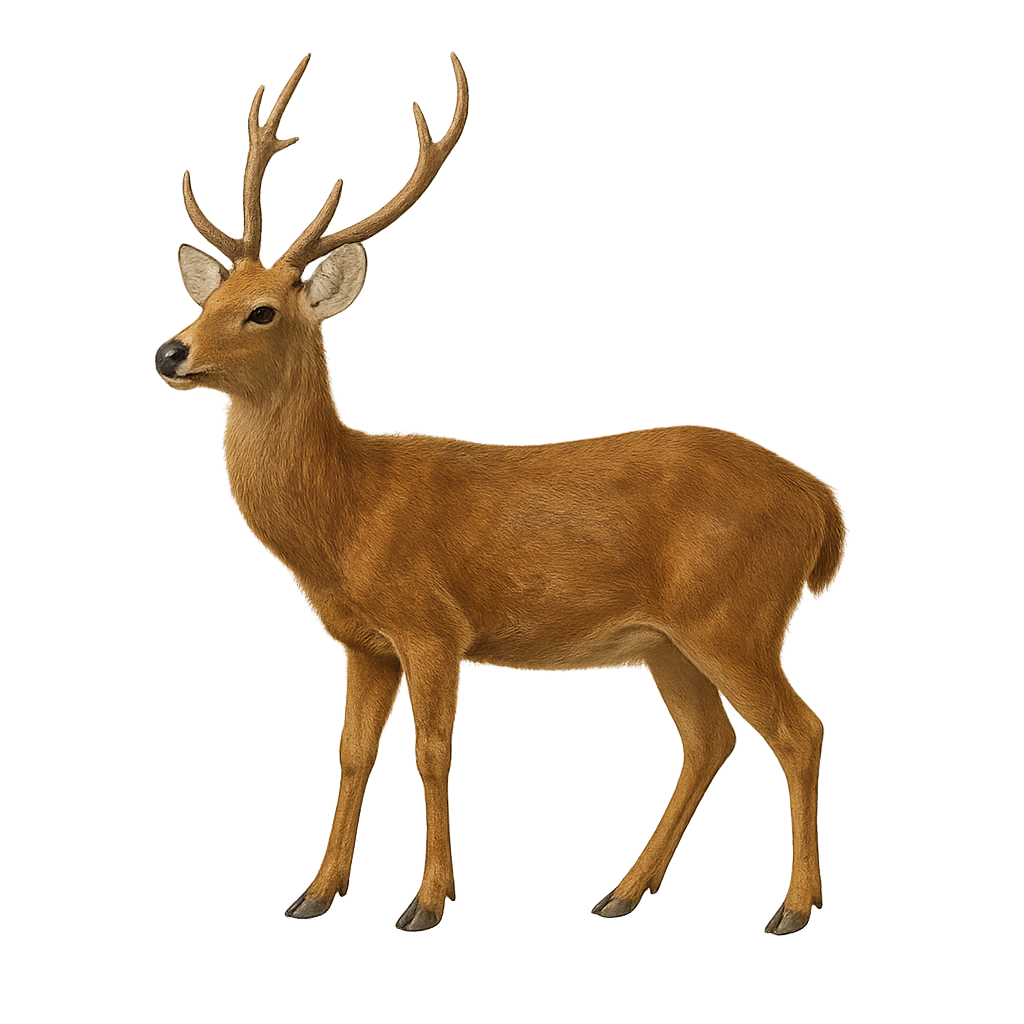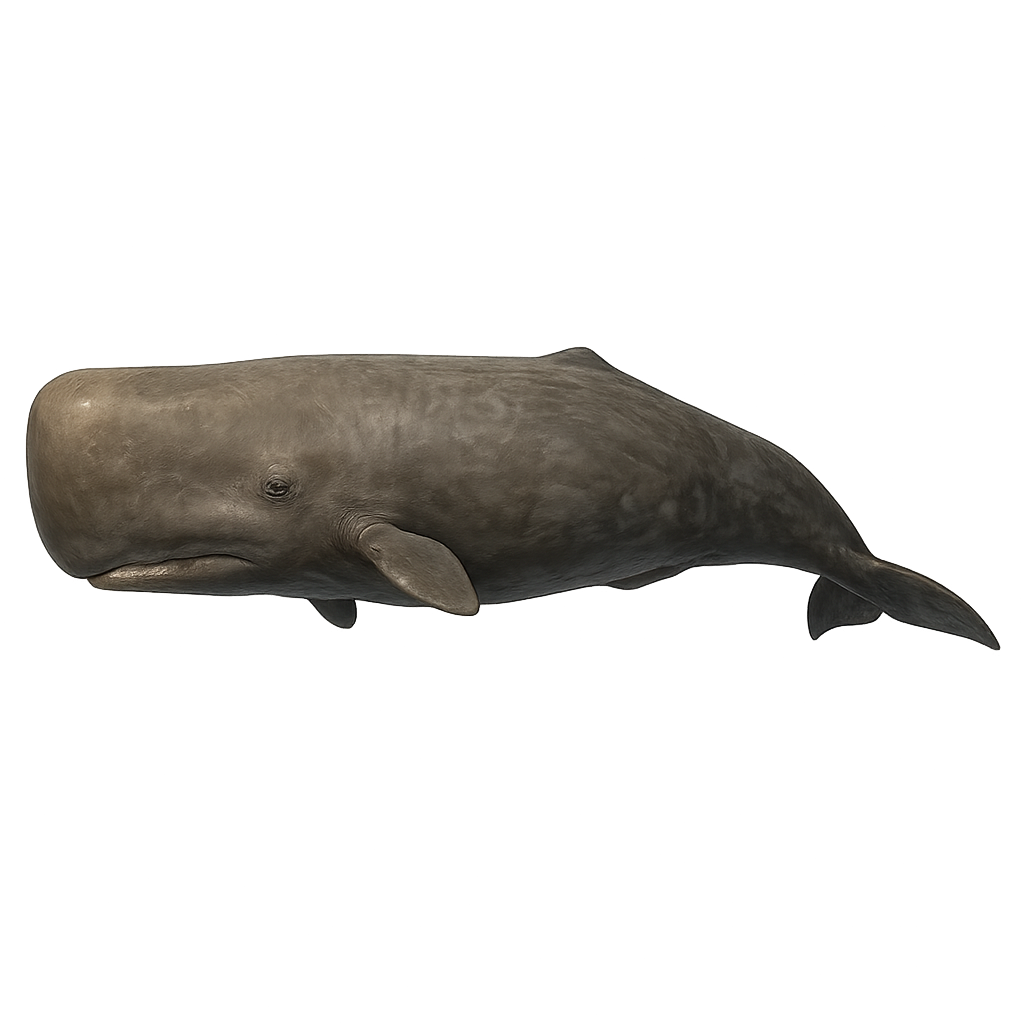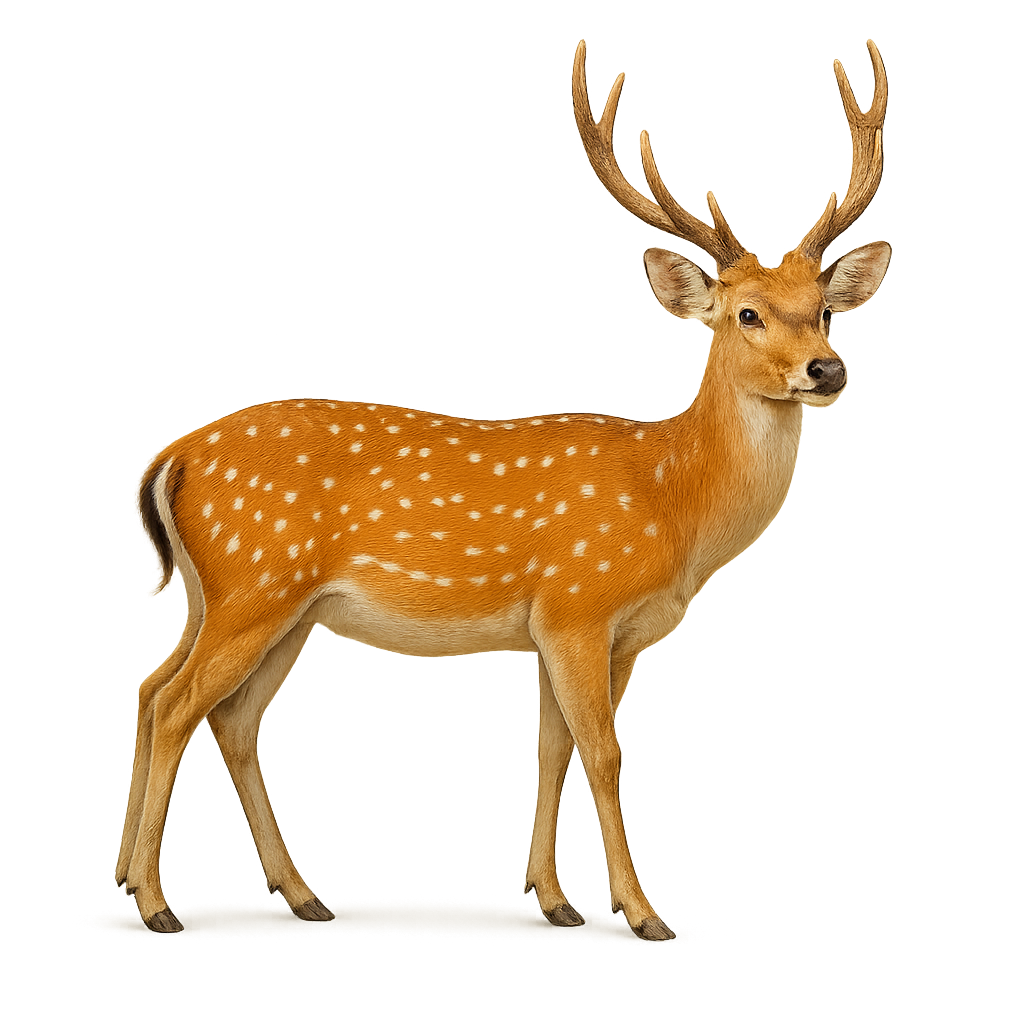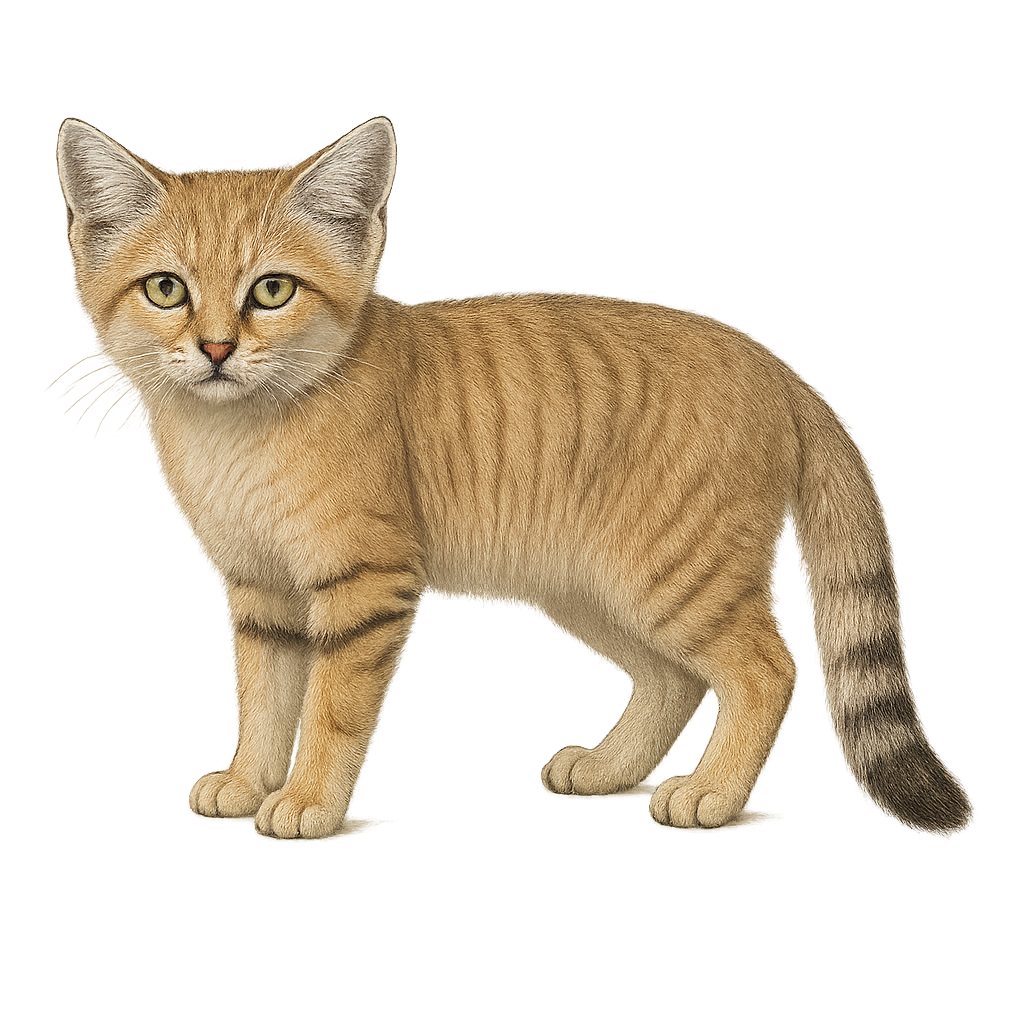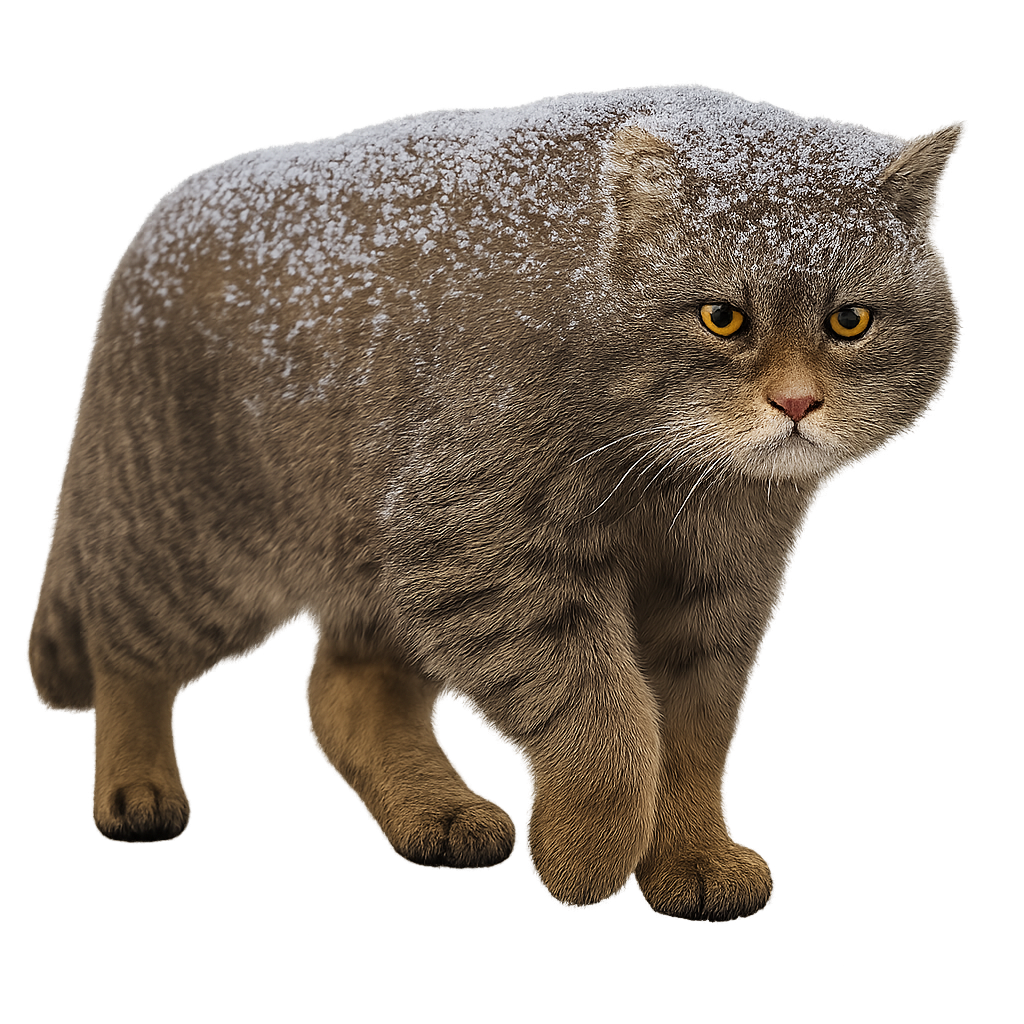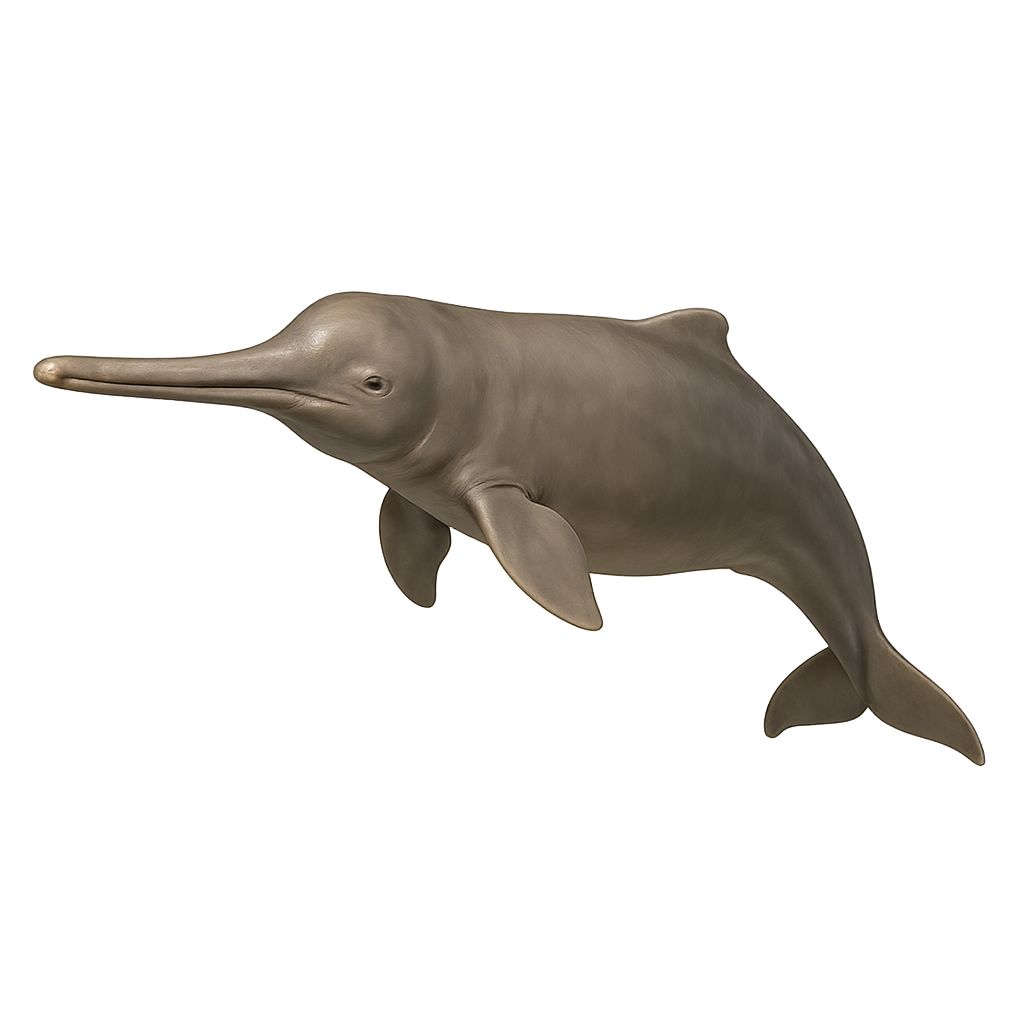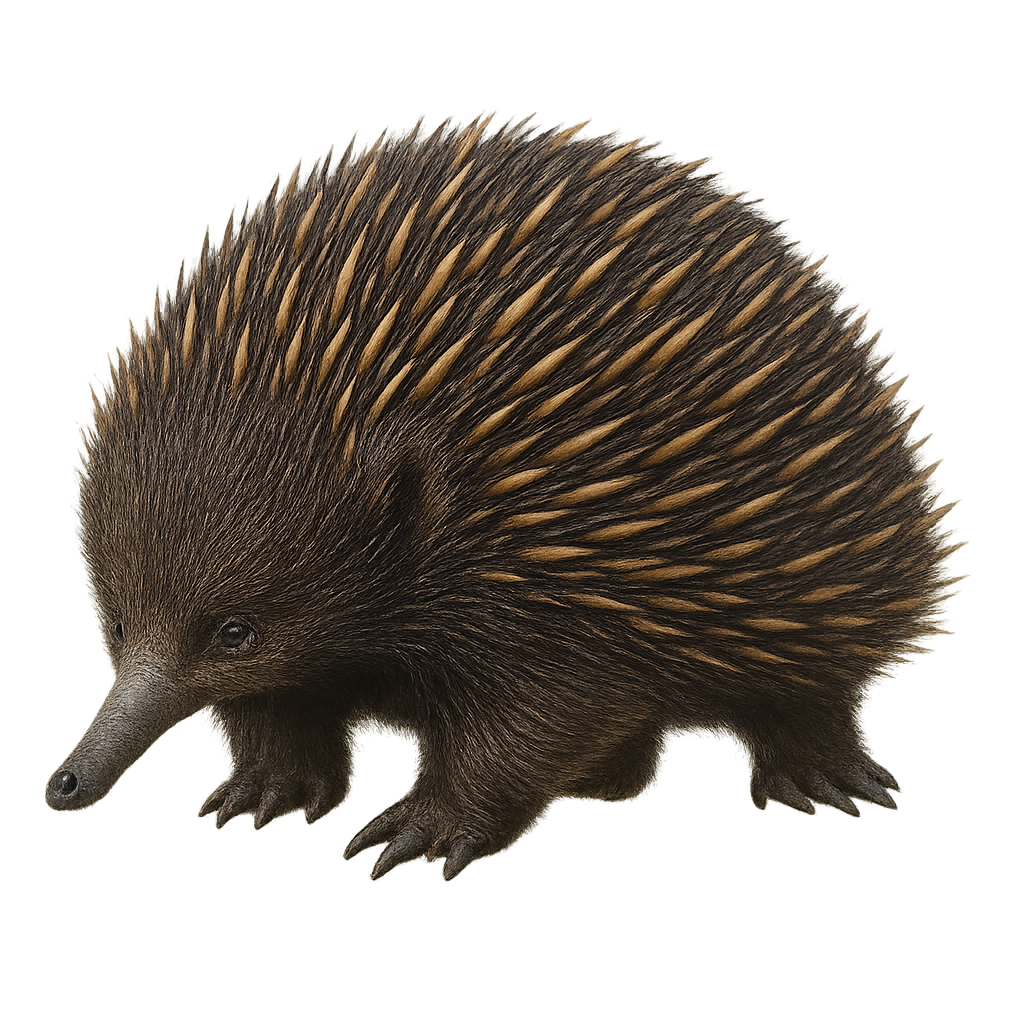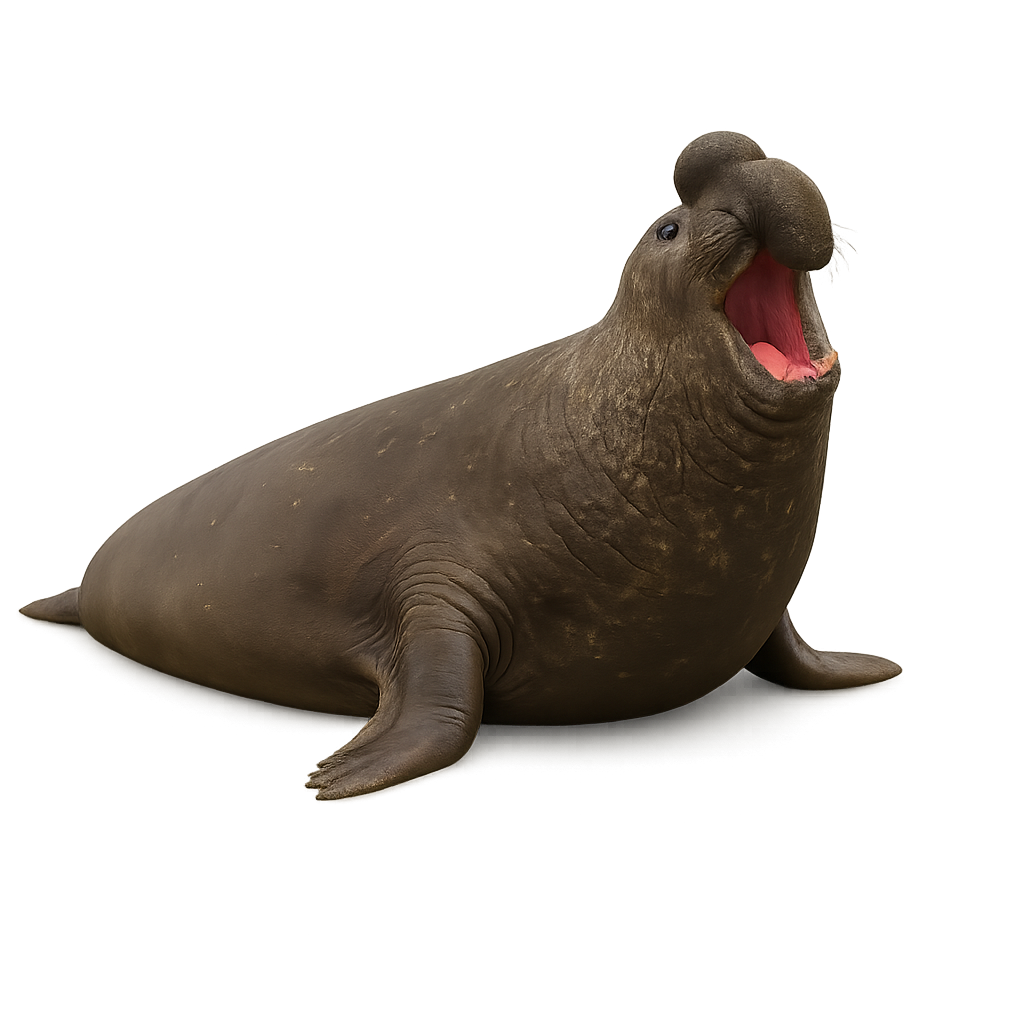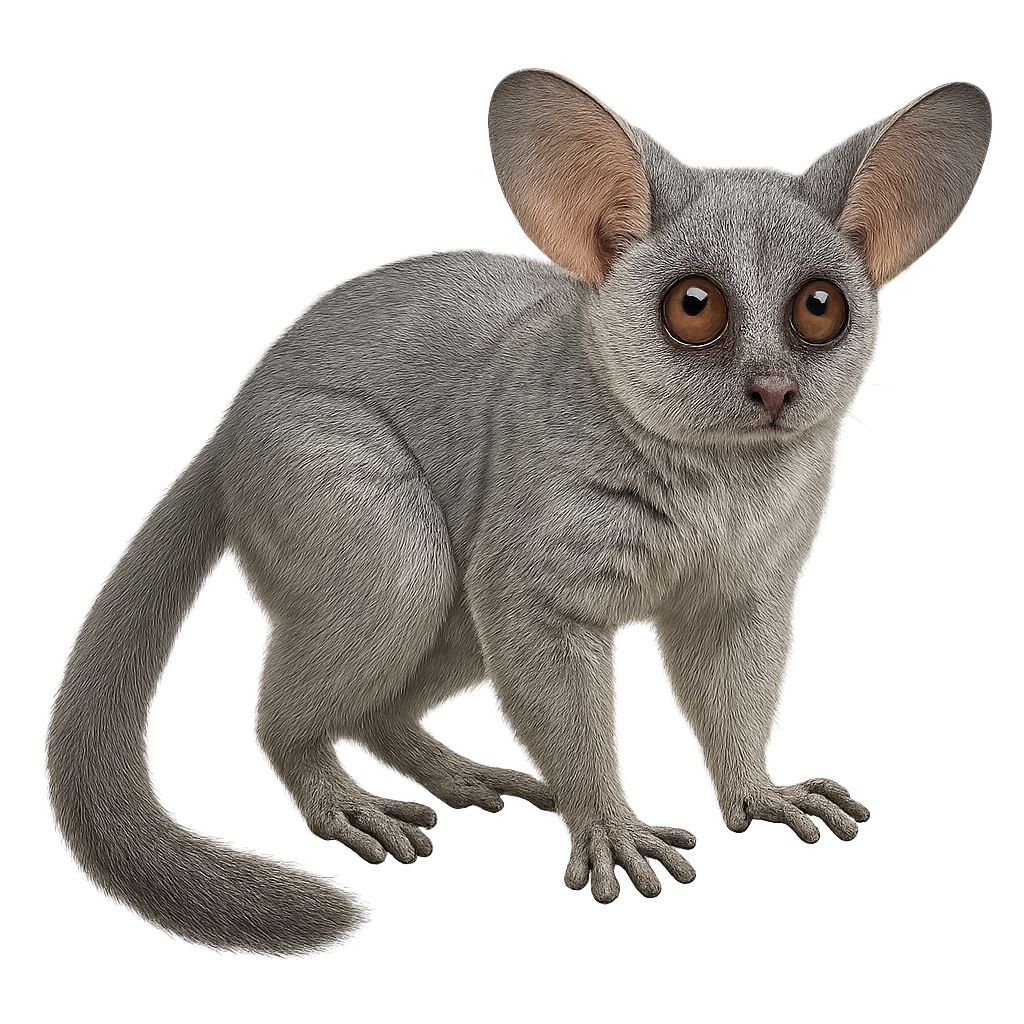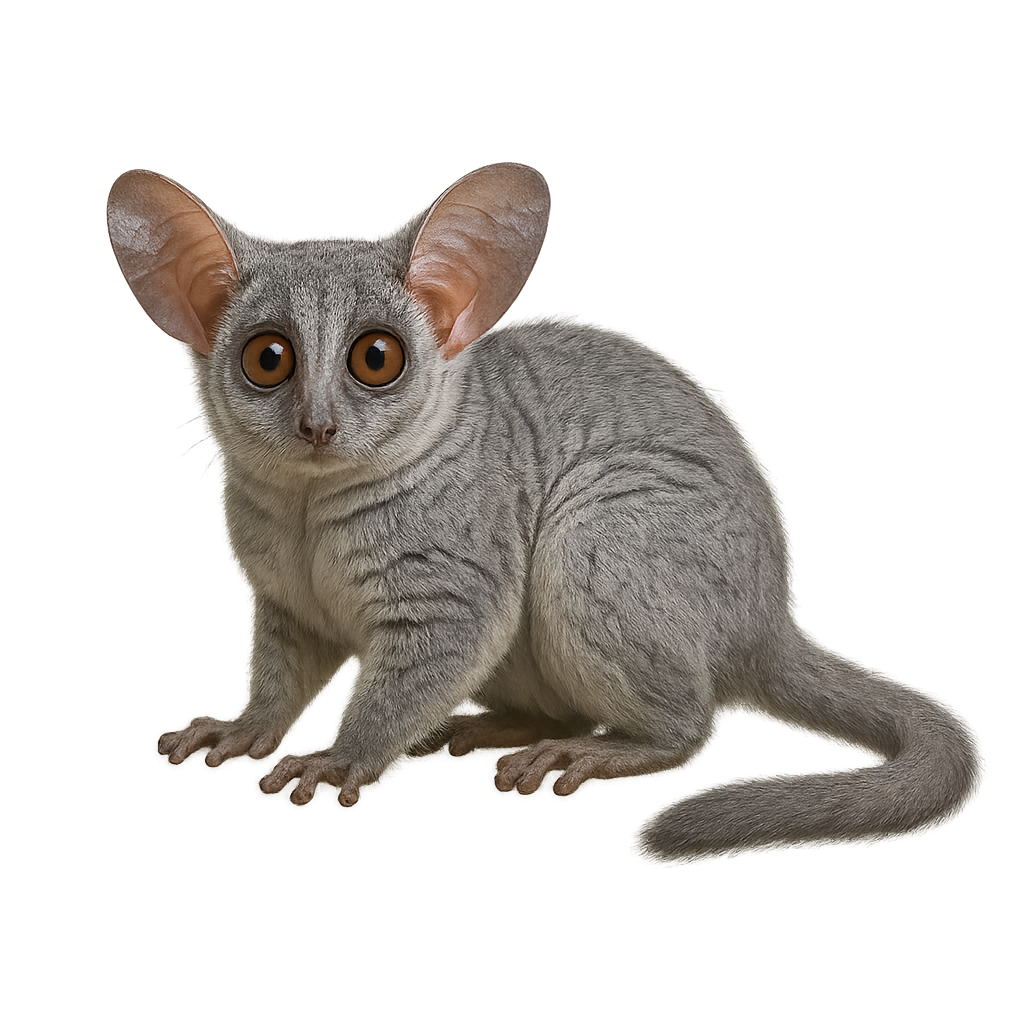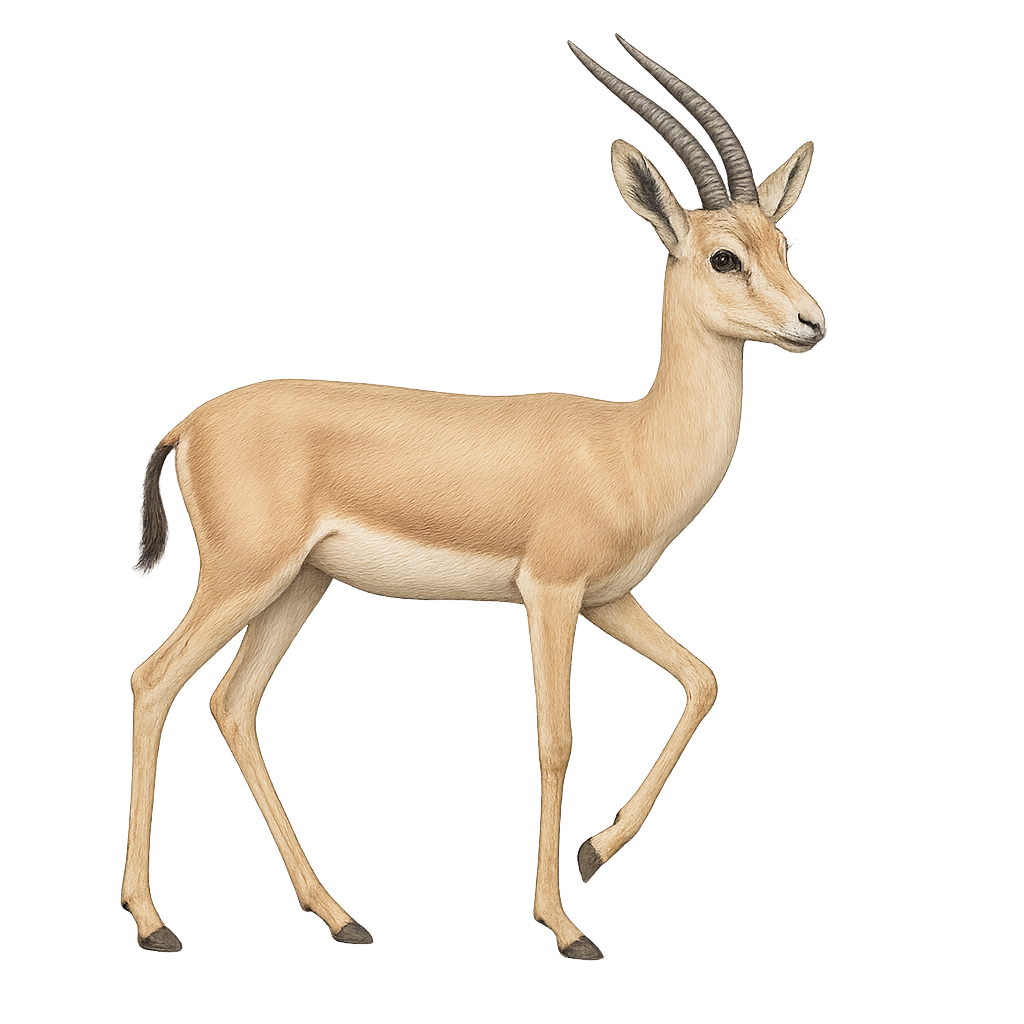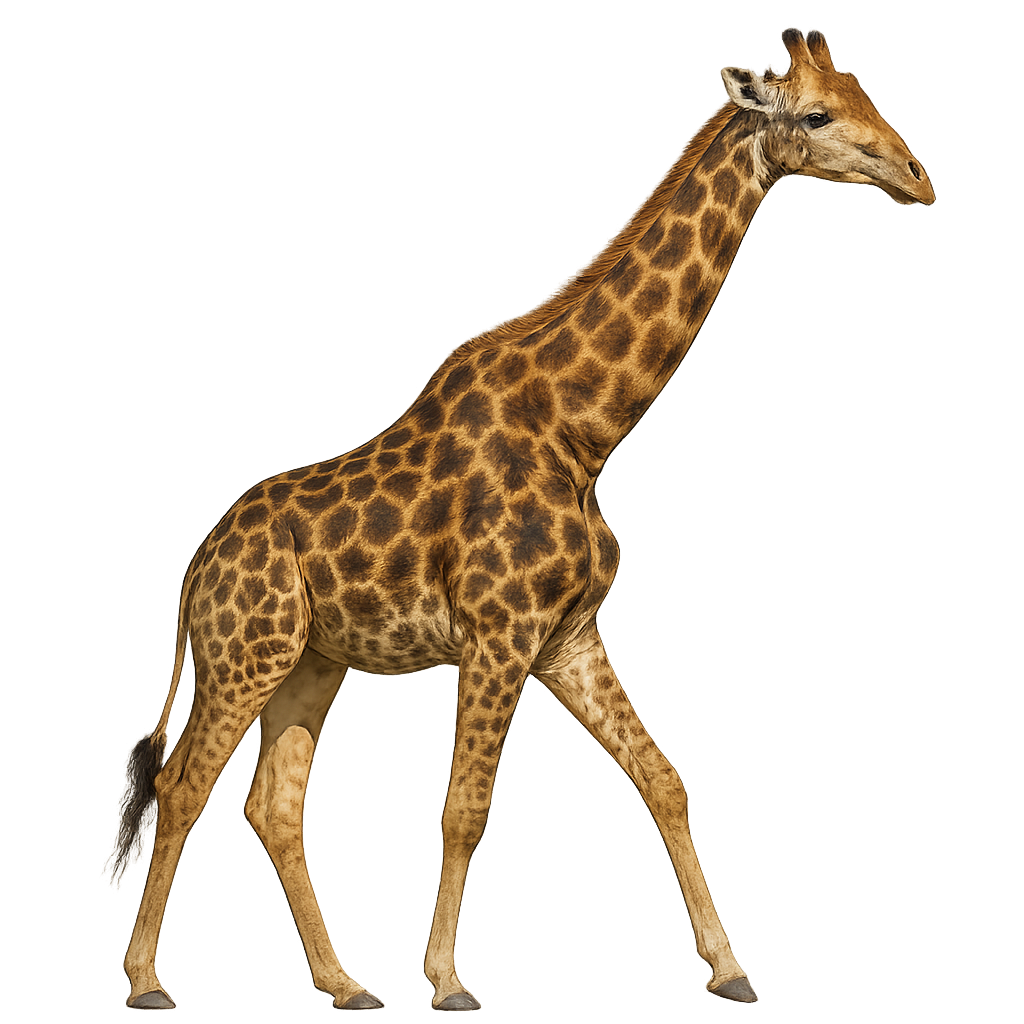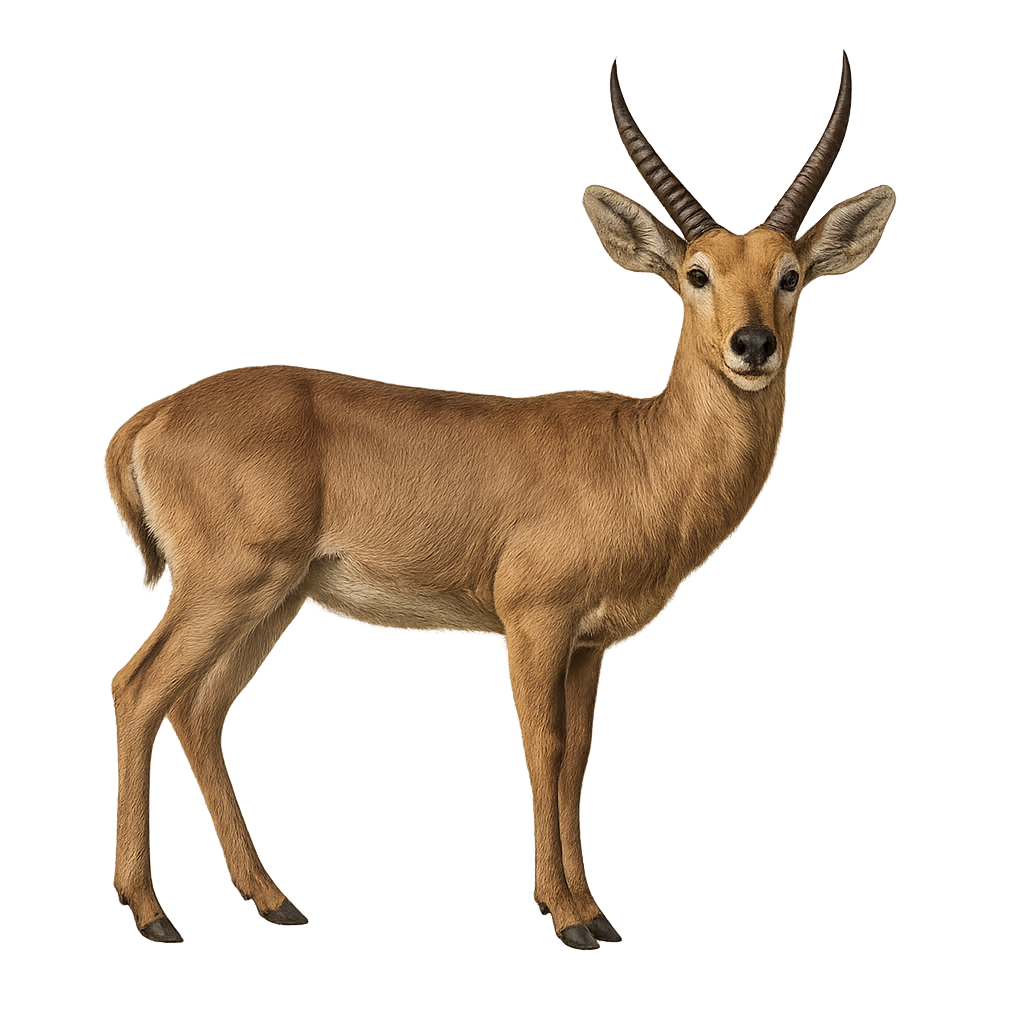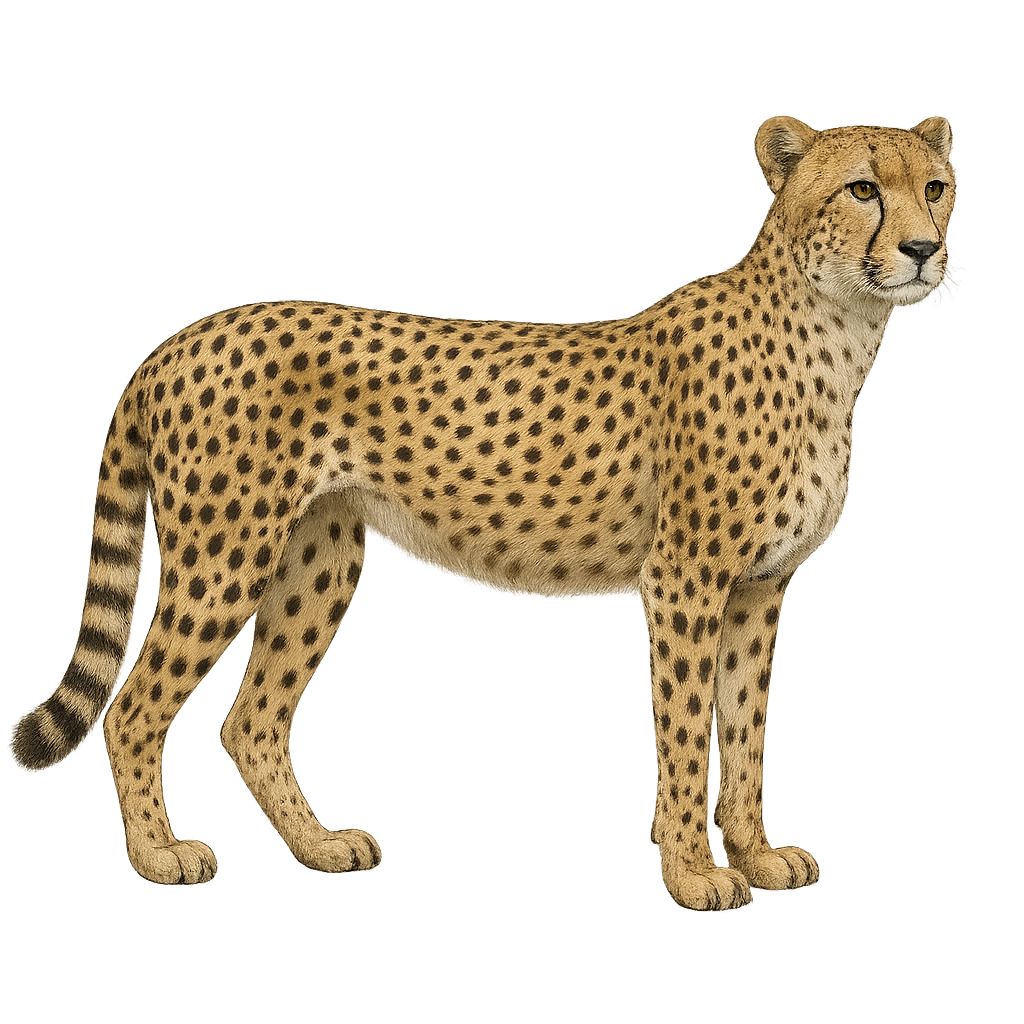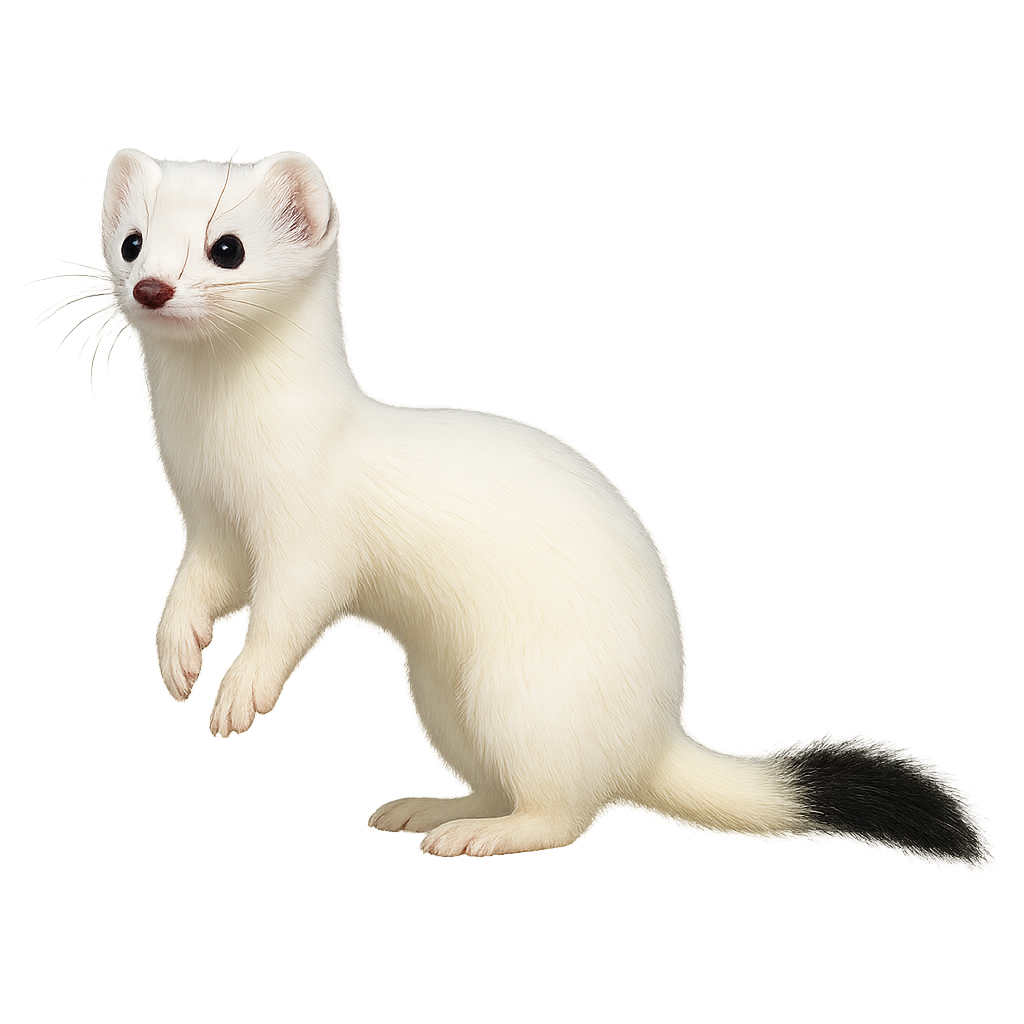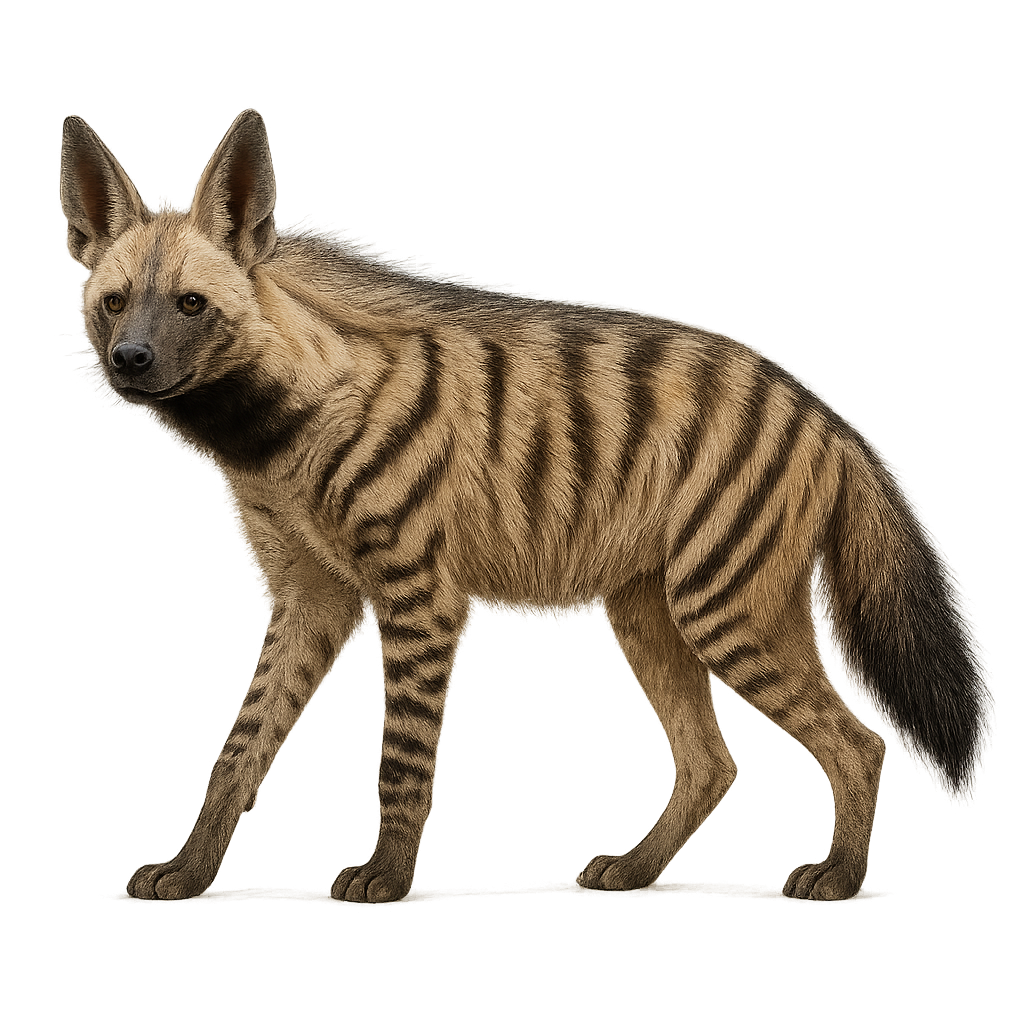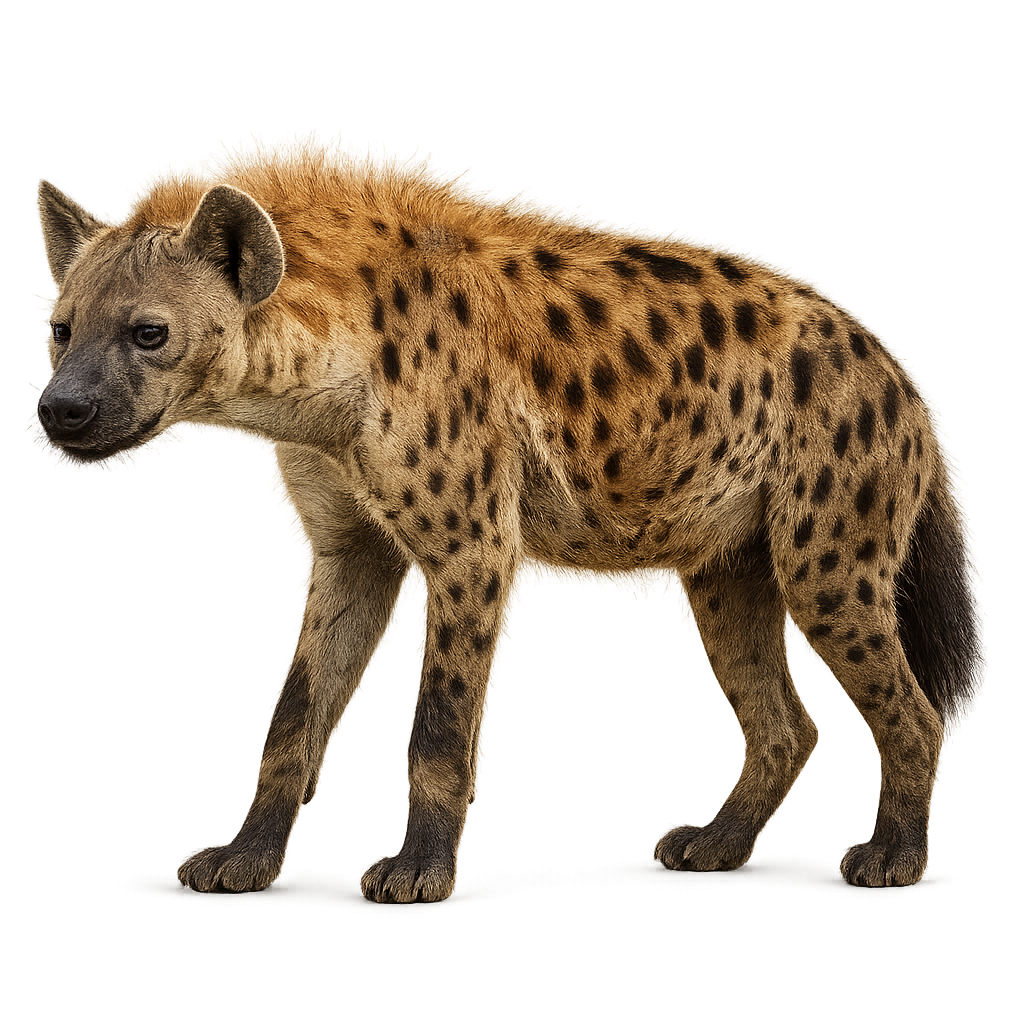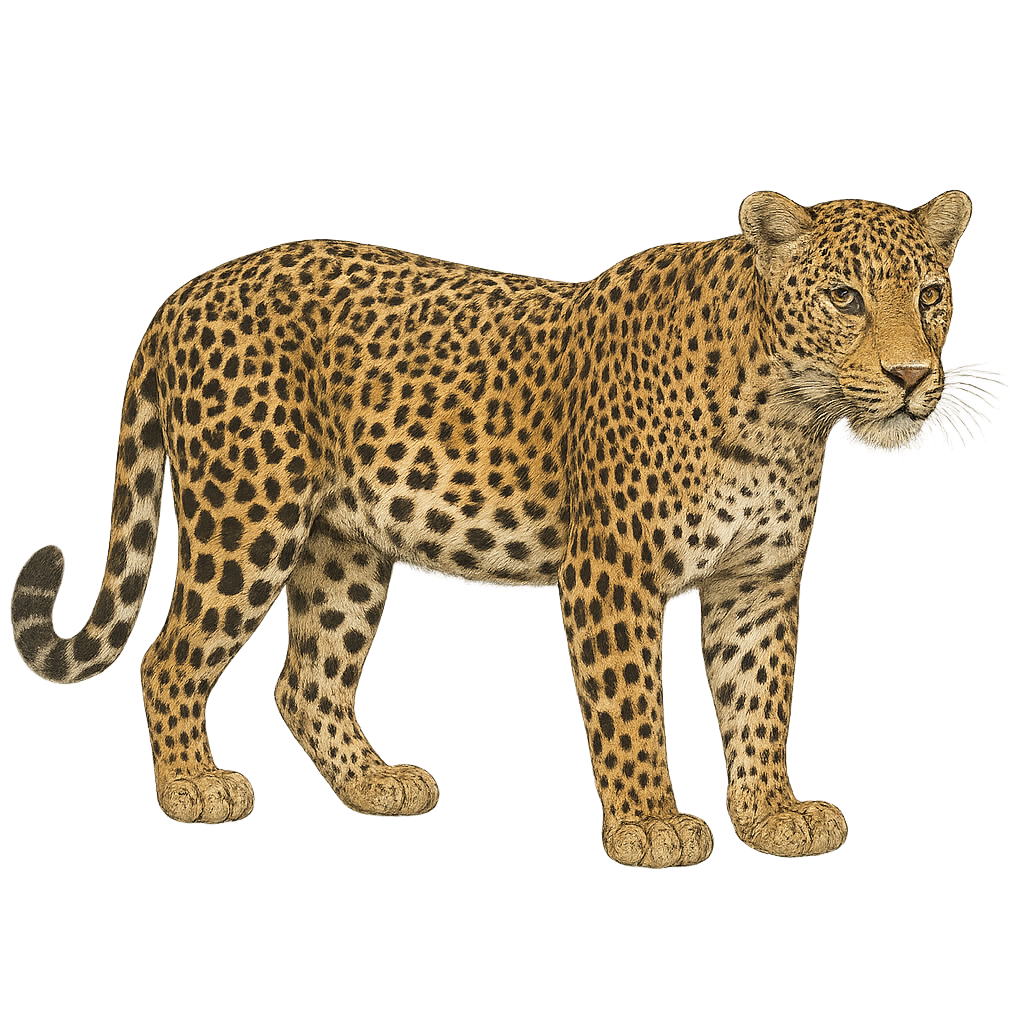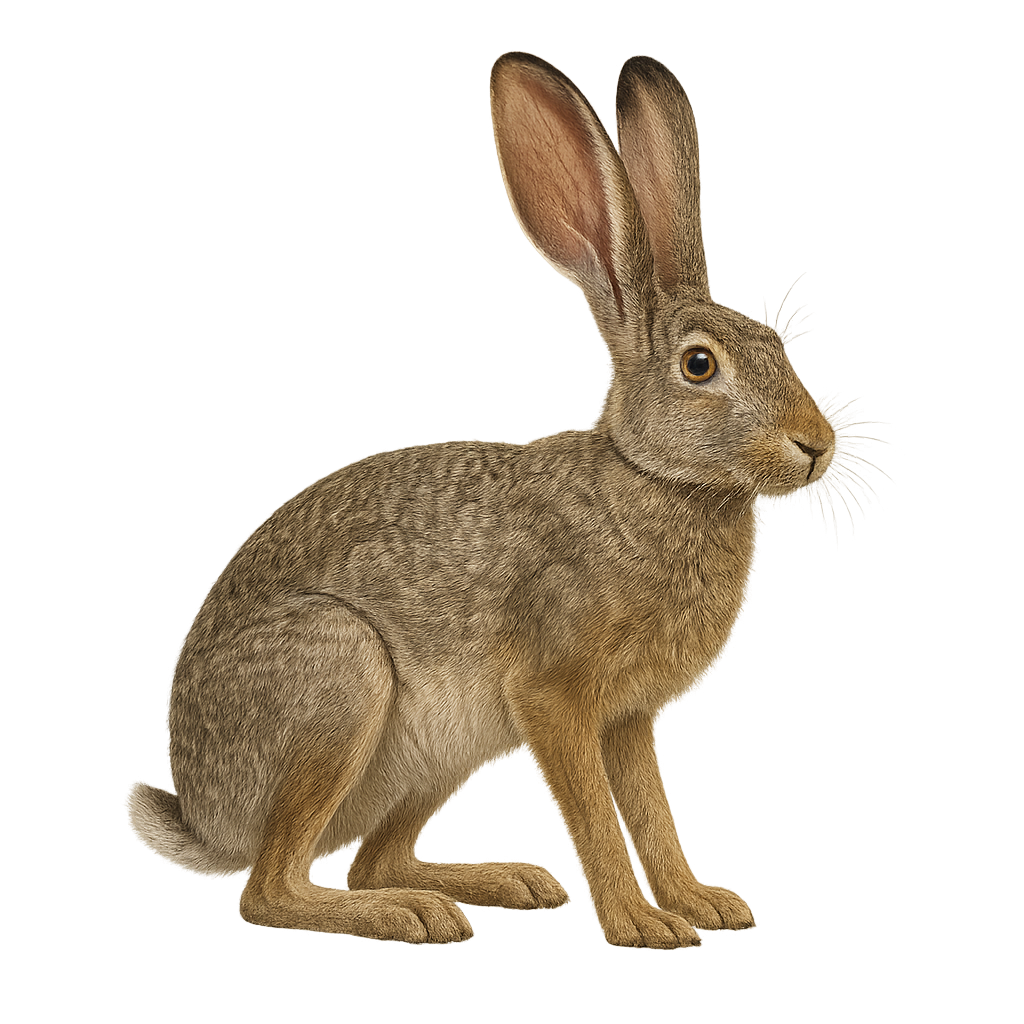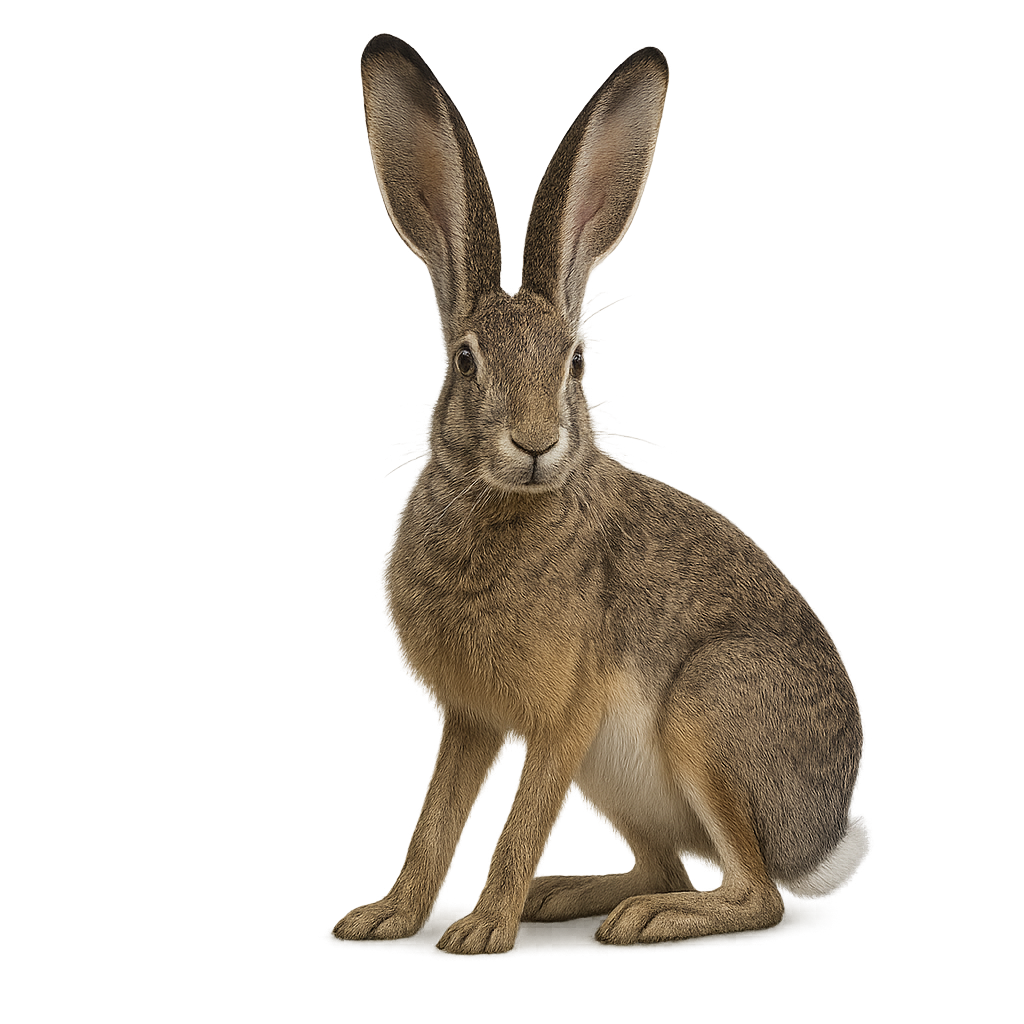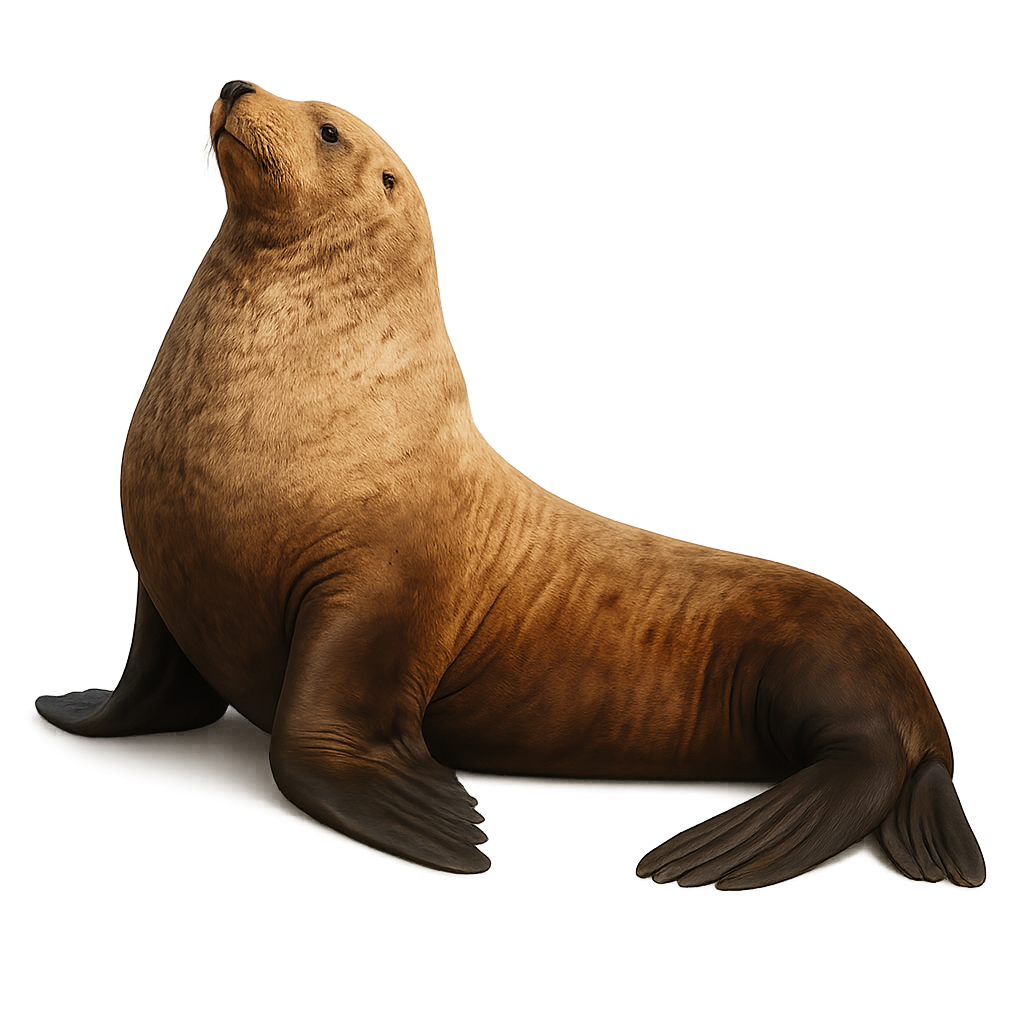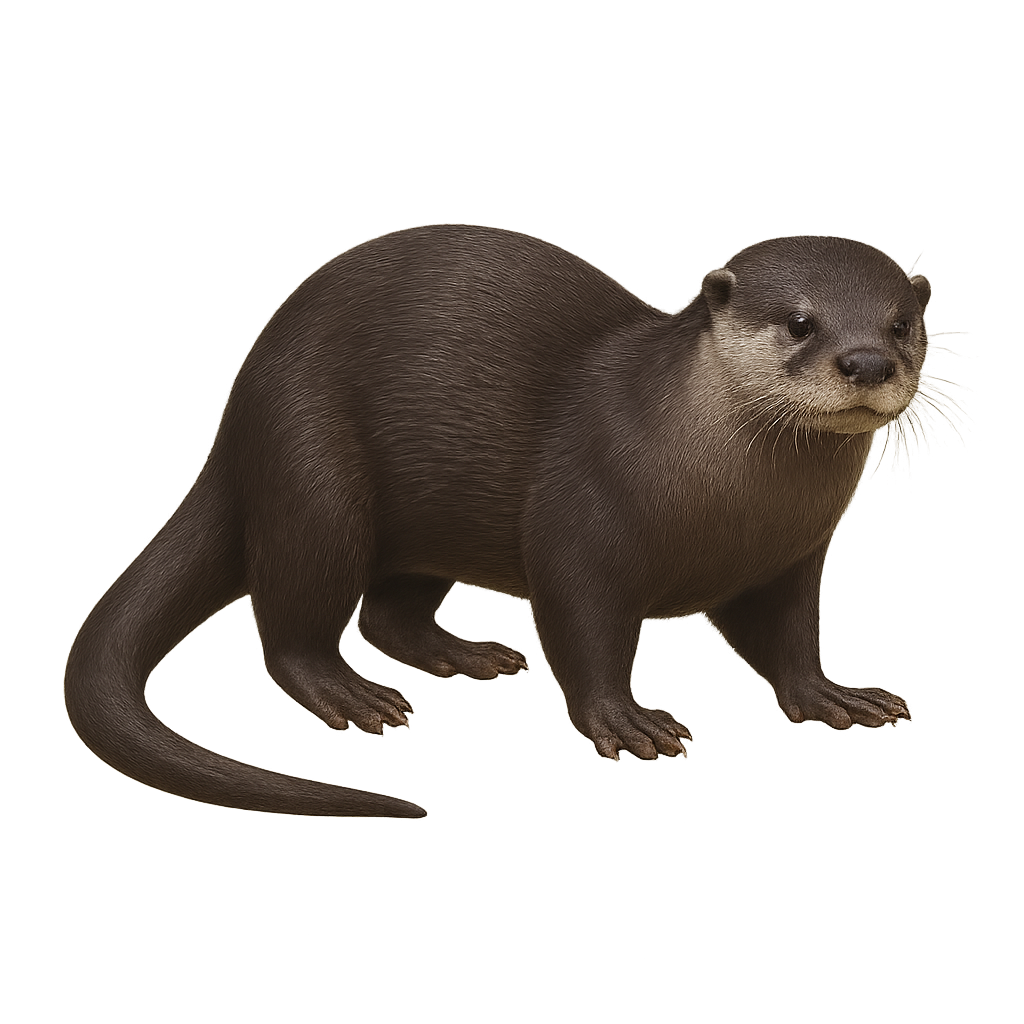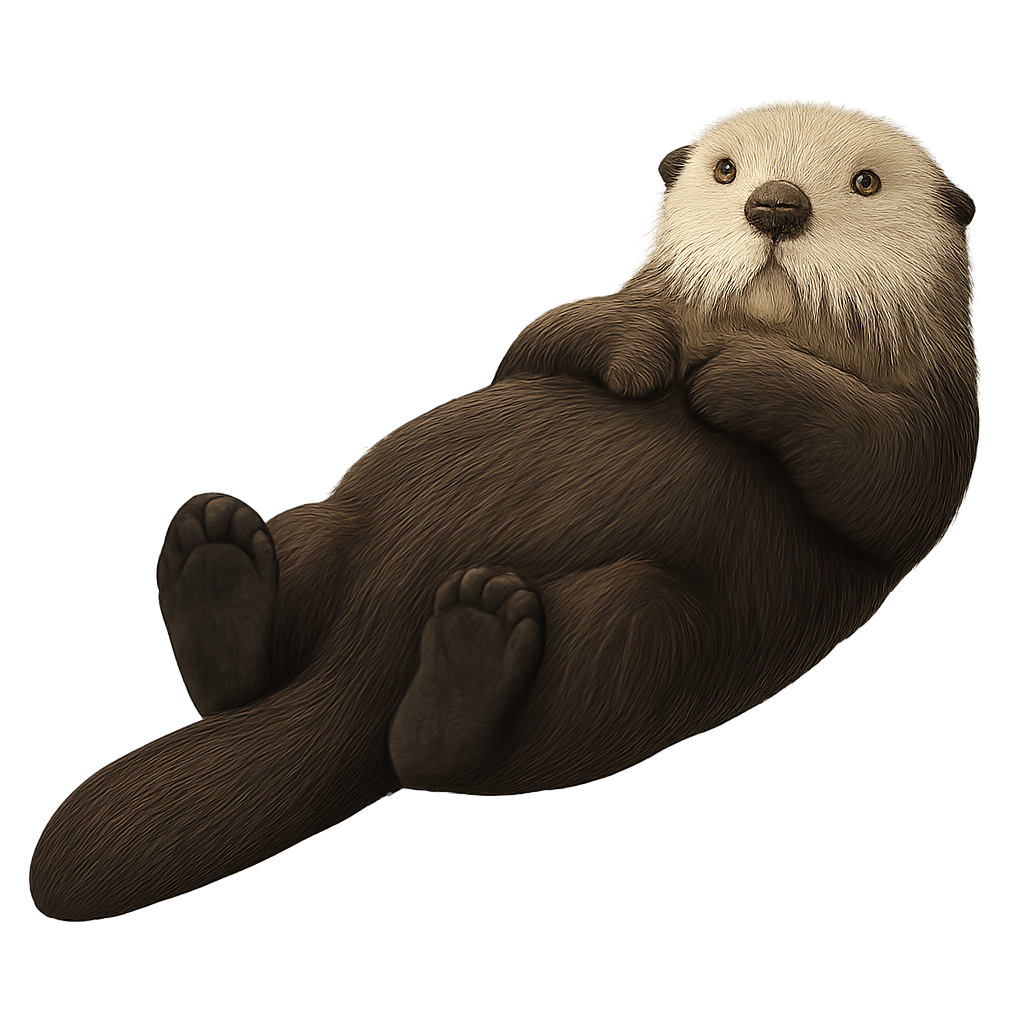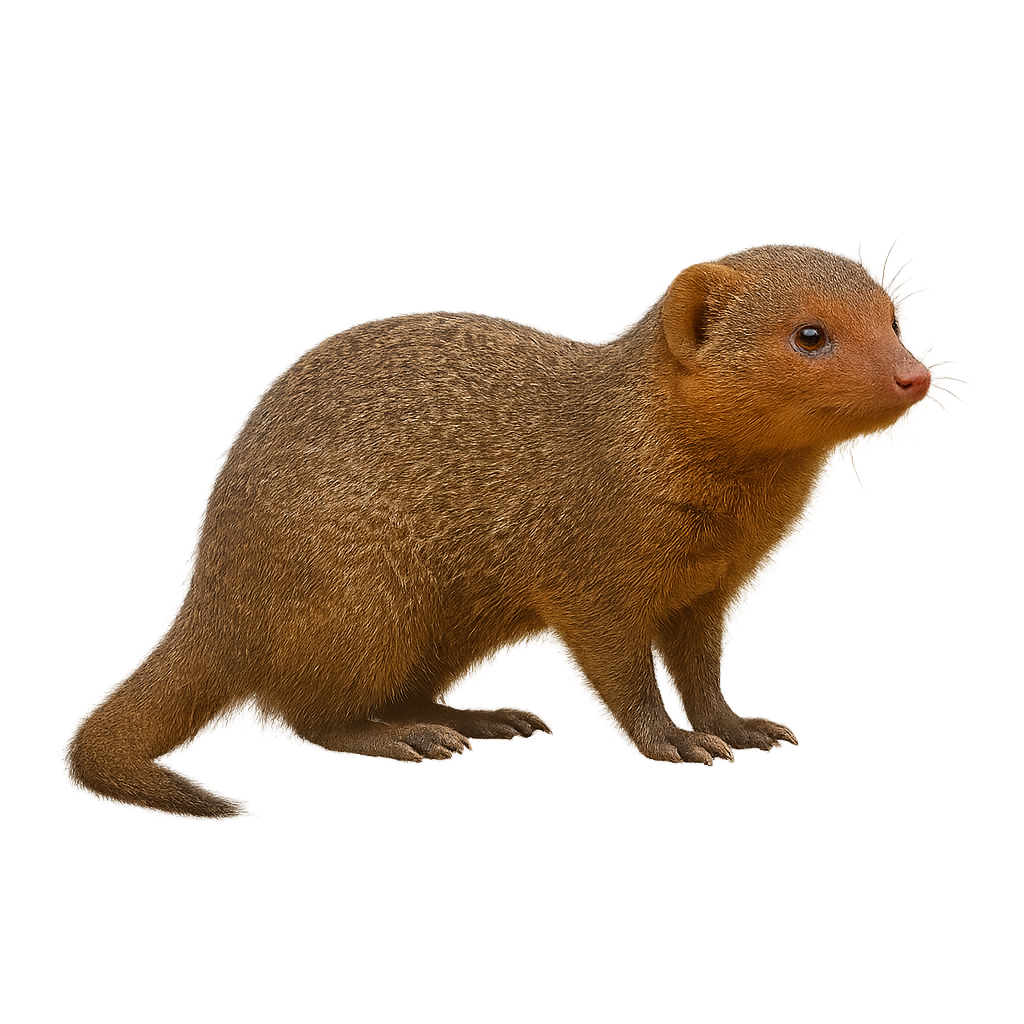The sable antelope, or Hippotragus niger, is a majestic African herbivore, recognizable by its black coat in adult males and dark brown in females and juveniles. Both sexes have long, backward-curving horns. These animals live in herds, often led by a dominant female, and are primarily found in wooded savannas and open grasslands. Their diet mainly consists of grasses and foliage. Males are territorial and can be aggressive during the rutting season. The sable antelope is an iconic species of African wildlife, admired for its beauty and grace.
The southern right whale is a large baleen whale in the family Balaenidae, measuring 13–18 m in length and weighing up to 80 tonnes. Its robust body lacks a dorsal fin and is covered with white callosities on the head. It inhabits temperate coastal waters of the Southern Hemisphere and feeds on zooplankton by slow-swimming filter feeding. During the breeding season, females give birth to and nurse calves in sheltered bays.
The Rucervus duvaucelii, commonly known as the barasingha or swamp deer, is a deer species native to the Indian subcontinent. It is recognizable by its impressive antlers, which can have up to twelve tines, hence its local name meaning "twelve-tined". This deer prefers wet and marshy areas, where it primarily feeds on aquatic grasses. Males are generally larger than females and have a golden-brown coat. The barasingha is a social species, living in herds that can number several dozen individuals. Unfortunately, it is threatened by habitat loss and illegal hunting, leading to a significant decline in its wild populations.
The Siberian Ibex, also known as the Asiatic Ibex, is a majestic wild goat species that lives in the rocky mountains of Central Asia, particularly in Russia, Kazakhstan, China, and Mongolia. This imposing animal, with long, curved horns and a dense coat that protects it from harsh winters, typically inhabits the steep slopes of high-altitude mountains.
Herbivorous, the Siberian Ibex primarily feeds on alpine vegetation, grasses, and woody plants. It is particularly agile, capable of moving across rugged terrain and leaping between rocks with ease. While it was once heavily hunted for its valuable horns and meat, conservation efforts have helped stabilize its population, although the Siberian Ibex remains vulnerable due to habitat loss and poaching.
The Sperm Whale is the largest of the toothed cetaceans and the largest living marine predator today. It is easily recognizable by its massive head, which makes up about one-third of its total body length, and its streamlined body. This cetacean, which can reach up to 20 meters in length and weigh several dozen tons, is a deep-sea creature, primarily feeding on squid, including giant squids, which it hunts at extreme depths.
The Sperm Whale is known for its long migrations, traveling thousands of kilometers between breeding grounds in the tropics and feeding areas in colder waters. Although it was intensively hunted for its oil and blubber in past centuries, it remains a protected species. The Sperm Whale also plays a crucial role in the marine ecosystem by regulating prey populations and maintaining the balance of food chains.
The Sika Deer is a medium-sized cervid, native to East Asia, that is distinguished by its spotted coat, especially visible in young individuals and females. Its coat ranges from light brown to reddish, often sprinkled with small white spots that help it blend into its forested environment. The Sika Deer has antlers that, although smaller than those of the Red Deer, are well-developed in adult males. It primarily inhabits deciduous and coniferous forests, as well as mountainous areas.
The Sika Deer is an herbivore, feeding mainly on herbaceous plants, young shoots, and leaves. It is a social animal, living in groups, especially during the breeding season. Outside of this period, Sika Deer may be more solitary or live in small family units. While its population remains stable in certain regions, the Sika Deer is sometimes considered an invasive species in other parts of the world, particularly in Europe, where it has been introduced and can compete with local species.
The Striped Jackal is a small canid found primarily in Africa, inhabiting savannas, open forests, and mountainous regions. It is distinguished by the dark stripes along its flanks, which give it a unique appearance among other jackals. Its coat is typically brown-gray, with lighter markings on the belly and underside of the legs, helping it blend into its natural environment.
The Striped Jackal is an opportunistic carnivore, feeding on small mammals, insects, fruits, and sometimes carrion. While it is primarily solitary, it can occasionally be seen in small groups while foraging for food. A skilled hunter, it uses strategies to capture its prey. Like many canids, it faces threats such as habitat loss and competition with other predators, but its population remains relatively stable.
The side-striped jackal, Canis adustus, is a medium-sized canid found primarily in sub-Saharan Africa. It is distinguished by its gray-brown coat with distinctive white stripes along its sides. This opportunistic carnivore feeds on small mammals, birds, fruits, and carrion. It is often seen alone or in pairs, although family groups may form. Adapted to various habitats, it inhabits savannas, open forests, and agricultural areas. Although generally discreet, it may approach inhabited areas in search of food.
The Felis margarita, commonly known as the sand cat, is a fascinating feline that inhabits the desert regions of North Africa and the Middle East. This small cat is perfectly adapted to its arid environment, with wide, furry paws that allow it to walk on hot sand with ease. Its sand-colored coat provides excellent camouflage in its natural habitat. The sand cat is a nocturnal hunter, feeding mainly on small rodents, birds, and insects. It is known for its ability to survive with very little water, obtaining necessary moisture from its prey. Although discreet and difficult to observe, it plays a crucial role in the desert ecosystem by regulating small animal populations.
The Scottish Wildcat is a rare and endemic subspecies of the European Wildcat, primarily found in the mountains and forests of Scotland. It is recognizable by its dense, thick coat, which ranges from gray-brown to brown with characteristic dark markings on the head, legs, and tail. Smaller and stockier than the domestic cat, the Scottish Wildcat has slightly rounded ears and a sharp gaze, allowing it to blend perfectly into its wooded and hilly environment.
This cat is a discreet and solitary hunter, primarily active at night, feeding on small mammals, birds, and occasionally insects. It is also an excellent climber and can often be seen in trees or rocky areas. The Scottish Wildcat is considered an endangered species due to habitat loss, hybridization with domestic cats, and poaching. Conservation programs are in place to protect this unique subspecies and preserve its habitats.
The South Asian river dolphin is a small freshwater cetacean in the family Platanistidae, measuring 2–2.5 m in length, with a pale grey streamlined body and a long narrow beak. It inhabits shallow rivers, oxbow lakes, and canals of the South Asian subcontinent, feeding mainly on freshwater fish and crustaceans. Blind, it uses echolocation to navigate and hunt in turbid waters.
The short-beaked echidna is a small monotreme mammal, 30–45 cm long, covered in spines with an elongated head bearing a long tubular snout. Endemic to Australia and New Guinea, it inhabits forests, scrublands and open areas, feeding mainly on ants and termites with its fast, sticky tongue. Solitary, it alternates nocturnal and crepuscular activity phases to avoid heat.
Large marine mammal in the family Phocidae, reaching up to 3.5 m in length and 600 kg in weight. It inhabits Antarctic and subantarctic coastal waters, feeding mainly on fish, cephalopods and juvenile seals. During the breeding season, females give birth to a single pup on the ice or beach and nurse it for about three weeks.
The Beech Marten is a small carnivorous mammal belonging to the mustelid family. It measures between 40 and 50 cm in length, with a tail that can reach up to 30 cm, and typically weighs between 1.5 and 2 kg. Its fur is dense and smooth, typically brown in color, with a lighter belly and a distinctive white patch on the throat. The Beech Marten is agile and opportunistic, primarily hunting small mammals, birds, eggs, as well as fruits and insects. It is mainly nocturnal and solitary, but can be observed in a wide variety of habitats, including forests, orchards, and even urban areas. It is known for its ability to climb trees and enter attics and lofts of human dwellings. While the Beech Marten is relatively common in Europe, it faces threats related to habitat loss and human activities, such as road traffic and deforestation.
The Senegal Bushbaby, also known as the Senegal Galago, is a small nocturnal primate found primarily in the wooded regions and savannas of West and East Africa. It is easily recognizable by its large, round eyes adapted for night vision and its long hind legs that allow it to leap agilely from tree to tree. Its fur is soft and dense, usually gray or brownish, with a lighter belly. This primate is mainly insectivorous but also feeds on fruits and acacia gum. The galago is a social animal that communicates through high-pitched calls and uses its keen sense of smell to mark its territory.
The Senegal bush baby, also known as Galago moholi, is a small nocturnal primate native to the forests and savannas of West Africa, particularly Senegal and Gambia. This primate is easily recognized by its large eyes, pointed ears, and silky fur. It primarily feeds on insects, fruits, and nectar. The Senegal bush baby is an excellent climber and moves quickly from tree to tree using its long legs and prehensile tail. It is a social animal, often living in small groups, and is mainly active at night, using powerful vocalizations to communicate.
The slender-horned gazelle, or Gazella leptoceros, is a species of gazelle that primarily inhabits the desert regions of the Sahara. It is recognizable by its slender, elongated horns, which can reach up to 40 cm in length. Its coat is pale, almost white, allowing it to blend into the sandy dunes. This gazelle is well adapted to its arid environment, capable of surviving with very little water, feeding mainly on leaves, shoots, and fruits. Unfortunately, it is critically endangered due to excessive hunting and habitat degradation.
The Southern Giraffe is a subspecies of giraffe, characterized by its slender body, long neck, and robust legs. It typically stands between 4.3 and 4.8 meters tall, with males being larger and heavier than females, weighing between 800 and 1,200 kg. Its coat is light brown to beige, with irregular darker patches that are bordered by white. The patches of the Southern Giraffe are larger and more spaced out than those of other subspecies, giving it a distinctive pattern. It primarily inhabits the savannas and woodlands of southern Africa, notably in South Africa, Namibia, Botswana, and Zimbabwe. Herbivorous, it feeds primarily on acacia leaves, berries, and fruits, which it reaches with its long neck and prehensile tongue. While the species is currently less threatened than other giraffe subspecies, the Southern Giraffe faces risks related to habitat loss and population fragmentation.
The Southern Reedbuck, or Redunca arundinum, is a medium-sized herbivorous mammal belonging to the Bovidae family. It is primarily found in the moist savannas and grasslands of southern Africa. Recognizable by its light brown coat and lyre-shaped horns, the Southern Reedbuck is a gregarious animal living in small family groups. It is most active at dusk and dawn, feeding mainly on grasses and aquatic plants. Although generally wary, it can be observed from a distance in its natural habitat. Its population is stable, but it is threatened by habitat loss and hunting.
The Saharan cheetah, or Acinonyx jubatus hecki, is a rare subspecies of cheetah found mainly in the desert regions of the Sahara. It is distinguished by its pale coat and less pronounced spots, making it well-suited to its arid environment. This feline is an agile and fast predator, capable of reaching impressive speeds to catch its prey. Unfortunately, it is critically endangered due to habitat loss, hunting, and the decline of its natural prey. Conservation efforts are crucial for its survival. Solitary by nature, the Saharan cheetah is primarily active during the cooler hours of the morning and evening, avoiding the intense desert heat.
The Ermine is a small carnivorous mammal of the weasel family, easily recognizable by its immaculate white winter coat, which contrasts with its black-tipped tail. It measures about 25 to 35 cm in length, with a tail that can reach up to 10 cm, and weighs between 100 and 350 g. During the summer, its coat is typically brown with a lighter belly, but it turns completely white in winter, except for the black tip of its tail. The Ermine primarily inhabits forests, grasslands, and mountainous areas across Eurasia and North America. It is an excellent hunter, feeding mainly on small mammals such as mice, voles, but also on birds and eggs. The Ermine uses its hunting skills to capture prey with great agility and speed. While it is not endangered, the Ermine can be affected by habitat loss and climate change, particularly affecting the color of its fur.
The Striped Hyena is a medium-sized carnivore, easily recognizable by its striped coat and unique behavior among hyenas. It measures about 90 cm in length, with a shoulder height of 60 cm, and weighs between 40 and 60 kg. Its coat is mainly gray or beige, with black stripes on the flanks, helping it blend into its environment. The Striped Hyena has a wide head, large ears, and an elongated muzzle, along with a short tail. Unlike the spotted hyena, the Striped Hyena is more solitary and prefers to hunt alone or in small groups. It primarily feeds on small mammals, reptiles, and insects, but is also opportunistic and a scavenger, feeding on the carcasses of dead animals. It is found mainly in North Africa, in arid and semi-arid areas such as deserts and savannas. While the Striped Hyena is not endangered, it is threatened by habitat loss and human conflict.
The Spotted Hyena is a robust carnivore, known for its complex social behavior and distinctive call. It measures between 90 and 150 cm in length, with a shoulder height of about 70 cm, and weighs between 40 and 80 kg. Its coat is characterized by black and brown spots on a yellow-gray background, giving it a unique appearance. The Spotted Hyena primarily inhabits savannas, open grasslands, and wooded areas in sub-Saharan Africa, where it forms large clans organized around a strict hierarchy. It is primarily carnivorous, feeding on large prey such as gazelles and zebras, but it is also an opportunistic scavenger, feeding on carcasses of animals killed by other predators. It is an effective hunter, using group strategies to capture prey. Although the species is relatively abundant, it is sometimes viewed negatively due to its reputation as a scavenger, but it plays an important role in ecosystems by eliminating carcasses and regulating animal populations.
The Sri Lankan Leopard, Panthera pardus kotiya, is a leopard subspecies endemic to Sri Lanka. It is distinguished by its spotted coat, ranging from golden yellow to brown, with distinct black rosettes. This feline is the island's largest predator and plays a crucial role in the ecosystem by regulating prey populations. It inhabits various environments, from tropical rainforests to dry shrublands. Unfortunately, it is threatened by habitat loss, poaching, and human-wildlife conflict. Conservation efforts are vital to ensure its survival.
The Lepus microtis, commonly known as the scrub hare, is a medium-sized mammal found primarily in the savannas and grasslands of sub-Saharan Africa. This hare is easily recognizable by its long ears and grayish-brown fur, which helps it blend into its surroundings. It is mainly nocturnal, allowing it to avoid daytime predators. The scrub hare is an herbivore, feeding primarily on grasses, leaves, and young shoots. It has a remarkable ability to adapt, allowing it to survive in various habitats, from grassy plains to bushy areas. Although often solitary, it can sometimes be seen in small groups.
The Lepus saxatilis, commonly known as the scrub hare, is a medium-sized mammal belonging to the Leporidae family. It is primarily found in Southern Africa, inhabiting savannas, grasslands, and rocky areas. This hare is recognizable by its brown-grey fur, which provides excellent camouflage, and its long ears that offer superb hearing. Mostly nocturnal, it feeds on grasses, leaves, and bark. Although often solitary, it can sometimes be seen in small groups. Its speed and agility are its main defenses against predators.
The Steller sea lion is the largest otariid, with males reaching up to 3.3 m in length and weighing 600–1000 kg, with thick chestnut fur and a large head. It inhabits rocky shores and temperate coastal waters of the North Pacific, feeding mainly on fish, squid and crustaceans. During the breeding season, dominant males arrive in May to establish territories and harems, and females give birth to a single pup on shore in June–July.
The smooth-coated otter, Lutrogale perspicillata, is a semi-aquatic mammal belonging to the Mustelidae family. It is recognizable by its dense, smooth fur, typically dark brown on the back and lighter on the belly. This species is primarily found in South and Southeast Asia, inhabiting rivers, lakes, and swamps. It is well adapted to aquatic life with its webbed feet and muscular tail, allowing it to swim gracefully. The smooth-coated otter is a social animal, often living in family groups. It primarily feeds on fish but can also consume crustaceans and small mammals. Although its conservation status is concerning due to habitat loss and pollution, it plays a crucial role in the aquatic ecosystem.
The Sea Otter is a marine aquatic mammal primarily found along the coasts of the Pacific Ocean, particularly in North America and Northeast Asia. It measures between 1 and 1.5 meters in length, with a short tail of about 30 cm, and weighs between 14 and 45 kg, with females generally being smaller than males. Its coat is extremely dense and waterproof, with fine hairs that help it stay warm in the cold ocean waters. Unlike many other marine mammals, the Sea Otter does not have a layer of fat beneath its skin, making its fur all the more crucial for survival. This carnivore primarily feeds on shellfish, crustaceans, mollusks, fish, and sea urchins, often using rocks as tools to open them. The Sea Otter often lives in family groups called "rafts," floating together on the water's surface. Although it is protected in many areas, the Sea Otter is still threatened by pollution, habitat loss, and hunting.
The Slender mongoose is a small species of mongoose often found in the savannas and dry forests of East Africa. It primarily feeds on small insects, reptiles, and occasionally small mammals. With its slender body and quick movements, it is highly agile and often lives in family groups. Slender mongooses are very social and communicate with each other through vocalizations and visual signals. Although abundant, this species may be locally threatened by habitat loss.


